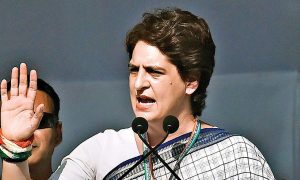By Rajagopal Subramanian
The current market event is already labelled as among the five greatest market declines of all time. We are possibly in the midst of a significant 3-sigma event that has the potential to destabilize markets across the world. To ensure minimum disruptions, we must see that our portfolios are designed to withstand these turbulences. Post the Great Financial Crisis of 2007-08, Central Banks have engineered a record quantum of money printing.
From an investment point of view, it has been one of the most challenging two years; along with record IPOs in India and the US, we’ve also witnessed frothy public and private markets and other such trends across the world. All of this makes prudent investment management and asset allocation all the more important, especially for HNIs and UHNIs who are looking to solidify and secure their financial legacies.
Read More:-Startup Layoffs: Overall Funding Is No Less This Year, But Why Firms are Firing Employees
Below are a few financial considerations for investors to help navigate the choppy waters that lie ahead.
We have to start by building resilience. Drawing from author and mathematical statistician Nassim Nicolas Taleb’s book ‘Antifragile: Things That Gain From Disorder’, we have to learn how to become resilient in the face of unsettling events and not shatter under pressure. Choose assets that are traditionally known to benefit from volatility and can withstand market stress. Thought of as a classic safe-haven currency and a resolute bet during a crisis, gold is an asset that gains from inflation and does well in situations where financial markets are in turmoil. Historically, from a 300 to 500-year perspective, gold has made a resurgence every time there has been excessive money printing. Over the past 13-14 years, after the Global Financial Crisis, even as the world economy grew at an average of 3-5 per cent per annum (a cumulative 50-60% growth) — G4 central bank assets for the same period grew by 5X (500%). We continue to believe that the aforesaid Central Bank excess will sooner rather than later lead to a loss of confidence in cost currencies. Along with gold, there are other sophisticated tools, such as credit long shorts and other non-correlated assets that can come in handy while building an anti-fragile portfolio.
Read More:-Petrol, diesel prices come down after excise duty, VAT cut; Check latest rates
For far too long now, investor behaviour has led investments into markets where past performance is good. However, for the past year or so, we have been wary of adding to US equity markets that have had an exceptional past decade. Instead, we have allocated to energy, utilities and other cash flow earning assets that represent high quality hard assets that are indispensable. The ongoing correction in markets is indicating that growth assets’ valuations are being challenged and may reset at a new lower normals. Thus, following the past may no longer be the right approach, because many developed economies are now home to some of the most broken monetary systems.
Meanwhile, emerging economies have become stronger because their Central Banks have worked to strengthen resilience to capital outflows after learning from their past mistakes. Hence, past underperformance, if evaluated properly, can be taken advantage of. From an investment perspective, such emerging markets present the opportunity of creating international value portfolios through high-quality assets and cash flows that are available at very good prices.
Read More:-India-Bangladesh ‘Bandhan Express’ train services resume after two years
From time to time markets overreact to political or financial uncertainties. We are seeing this happen in the US as we speak. For those who have been disciplined enough to have remained under allocated to the US and to disrupters in particular, the next couple of years may provide avenues for gradual addition to high quality US tech at a reasonable valuation, but one must tread with care.
We must also be cautious when chasing high yield investments. Over the past decade, fixed-income investments have been known to offer notoriously low returns, and this is true for both domestic and international markets. Investors have gravitated to return-free risks as opposed to risk-free returns! Blind search for yield is dangerous and high yield investing must be done carefully by buying assets where the price-value equation is right with adequate reward for illiquidity. Asset class managers who are focused on specific asset classes of their expertise, backed by decades of experience, are the best people to approach while looking to build high-yielding portfolios.
Read More:-Not Just Cars And Bikes, Prices of Electric Vehicles Also to Increase From Next Week. Here’s Why
At the same time, we have to seize the opportunity to invest in high-quality growth businesses. Currently, these continue to be expensive. However, the impending market turmoil could well present yet another opportunity to buy into high-quality businesses—in India and abroad. The most important lesson is that one need not be rooted to one’s investment philosophy—value or growth — and being nimble and agile can help build a balanced portfolio, and that it is important to move from one segment to another when the time is right. High quality growth portfolios, when built at the right time and price, can be held onto for decades, but patience and discipline are key.
Finally, we must be conscious of the issue regarding sustainability. It is no longer a catchphrase or a just trending fad. We have to be able to leverage the power of business and finance to leave a better planet for the future generations. From an investment point of view, there are some real rewarding possibilities on the horizon. The biggest potential lies in tech-powered businesses that are focused on projects such as smarter electrical grids, water conservation, sustainable farming techniques, shared mobility, electric vehicles, and much more. The best opportunities are surfacing where there are exceptionally talented people building truly ingenious products. However, such investments require patient capital and investors have to approach it keeping in mind a seven to ten-year-long timeframe, at the very least.
Read More : Coal India to Import For First Time in Years as Power Cuts Loom Large: Ministry Letter
An NRI has a host of investment opportunities in India, like Equity, Mutual Funds, Fixed Deposit, AIFs etc. India follows source based taxation, i.e. any income earned through an investment/asset based in India would be taxed from the investor, irrespective of their residential status. Hence, NRIs would be subject to tax on income earned through investments made in India. However, they can take shelter under the Double Tax Avoidance Agreement (DTAA) between India and his/her country of residence to ensure that the income earned in India is not taxed in both countries.





































